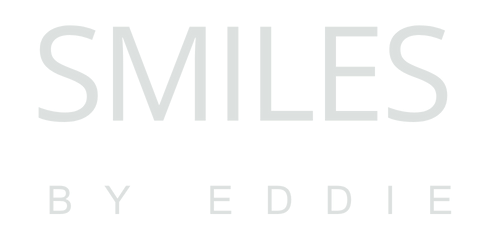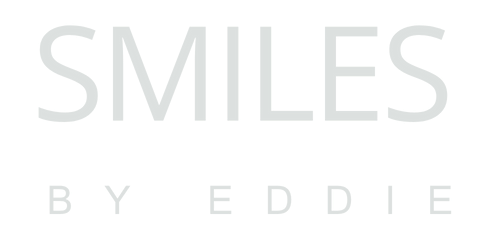A gum graft, also known as a gingival graft or periodontal plastic surgery, is a common surgical procedure performed to treat receding gums. Gum recession occurs when the gum tissue surrounding a tooth pulls back or wears away, exposing more of the tooth’s root. This can lead to increased sensitivity, root decay, bone loss, and an undesirable aesthetic appearance.
During a gum graft procedure, a small amount of healthy gum tissue is taken from another area in your mouth (often the roof of your mouth) or, in some cases, a donor source, and then carefully attached to the area where the gum has receded. This grafted tissue helps to cover the exposed tooth root, restore the natural gum line, and provide crucial protection for your teeth. For residents of Woodland Hills and the surrounding San Fernando Valley, we offer advanced techniques to ensure successful and comfortable gum grafting.
At Smiles By Eddie, my commitment is to your complete oral health, which includes healthy gums as much as healthy teeth. If you’ve noticed your gums receding, making your teeth look longer or causing sensitivity, it’s a condition that shouldn’t be ignored.
Gum recession can expose tooth roots to decay and damage, but fortunately, gum graft surgery offers an excellent solution to restore gum tissue, protect your teeth, and improve your smile’s aesthetics. My team and I are dedicated to providing compassionate and effective gum graft procedures right here in Woodland Hills, helping you regain optimal gum health and a confident smile.
Gum recession is a common dental problem that can stem from various factors and, if left untreated, can lead to more significant oral health issues. During your thorough examination at my Woodland Hills dental office, I will accurately diagnose the cause and extent of your gum recession and discuss if a gum graft is the appropriate treatment for you.
You might need a gum graft if you experience:
- Exposed Tooth Roots: This is the primary indication. When gums recede, the softer root surface becomes visible.
- Increased Tooth Sensitivity: Exposed roots lack the protective enamel of the crown, making them highly sensitive to hot, cold, or sweet foods and drinks.
- Risk of Root Decay: The root surface is softer and more prone to decay than enamel, making exposed roots highly vulnerable to cavities.
- Risk of Bone Loss: Untreated gum recession can sometimes be associated with or lead to supporting bone loss around the tooth.
- Periodontal Disease (Gum Disease): This is a common cause of recession, as the infection destroys gum tissue and bone.
- Aggressive Tooth Brushing: Brushing too hard or with a hard-bristled toothbrush can wear away gum tissue over time.
- Tobacco Use: Smoking or chewing tobacco can contribute to gum recession.
- Misaligned Teeth or Bite Problems: Teeth that are out of alignment or a misaligned bite can put excessive pressure on certain areas, leading to recession.
- Unattractive Smile Aesthetics: Receding gums can make teeth appear unnaturally long, disproportionate, or create “black triangles” between teeth.
- Preparation for Restorative Work: Sometimes, a gum graft is needed to create enough healthy gum tissue for successful placement of a crown or veneer.
I perform different types of gum graft procedures, each tailored to the specific needs of your gum recession. During your consultation, I will explain which technique is best suited for your case.
Connective Tissue Graft: This is the most common and often preferred method. A small flap of skin is cut on the roof of your mouth (palate), and tissue from underneath the flap (subepithelial connective tissue) is removed and then stitched to the gum tissue surrounding the exposed root. The flap on the palate is then stitched back down.
- Ideal for: Covering exposed roots, building up gum tissue around teeth, often results in excellent aesthetic outcomes.
Free Gingival Graft: Similar to a connective tissue graft, but a small piece of tissue is taken directly from the surface of the roof of your mouth and then stitched to the gum area being treated. This type is often used when a larger area of thin gum tissue needs to be thickened.
- Ideal for: Increasing the amount of keratinized (tough) gum tissue around a tooth, particularly when gum tissue is very thin.
Pedicle Graft (Lateral Slide Graft): This procedure uses gum tissue from immediately next to or near the tooth requiring the graft. A flap of tissue is partially cut and then stretched over the exposed root, with one edge remaining attached to its original blood supply. This is often successful because the blood supply remains intact.
- Ideal for: When there is enough healthy gum tissue immediately adjacent to the receded area.
Alloderm® (Acellular Dermal Matrix) Graft: In some cases, especially when a patient prefers to avoid taking tissue from their own palate, we can use a specially processed, sterile donor tissue. This “off-the-shelf” tissue acts as a scaffold, allowing your body to generate new gum tissue.
- Ideal for: Patients who prefer not to have a second surgical site (from their palate), or for treating multiple areas of recession simultaneously.
DR. EDMOND
AHDOOT
Addressing gum recession requires a delicate touch, specialized skill, and a deep understanding of periodontal health. Here’s why patients in Woodland Hills, CA, and the surrounding San Fernando Valley, trust Smiles By Eddie for their gum graft procedures:
- Periodontal Expertise & Precision: I possess extensive knowledge and experience in periodontal health and gum graft techniques. My meticulous approach ensures precise tissue placement and optimal integration for successful outcomes.
- Patient Comfort & Gentle Techniques: I understand that any surgical procedure can cause apprehension. My team and I prioritize your comfort, using advanced numbing techniques and offering various sedation options to ensure a gentle and stress-free experience.
- Personalized Treatment Planning: Every case of gum recession is unique. I take the time to thoroughly assess your individual condition, discuss the best graft type for your needs, and explain every step of the process.
- Focus on Long-Term Health & Aesthetics: My goal is not just to cover exposed roots but to restore healthy, stable gum tissue that protects your teeth long-term and enhances your smile’s natural beauty.
- Advanced Technology & Sterile Environment: Our Woodland Hills dental office is equipped with modern tools and maintains the highest standards of sterilization, ensuring a safe and effective surgical environment.
- Comprehensive Post-Operative Support: We provide thorough post-operative instructions and continuous support, ensuring you have all the information and care needed for a smooth recovery and successful healing.
- Trusted Local Care: Located conveniently in Woodland Hills, we are your local choice for specialized periodontal and cosmetic procedures, offering reliable and compassionate care close to home.

Receiving a gum graft is a surgical procedure performed with the utmost care and precision in our Woodland Hills dental office. Here’s a general overview of what you can expect:
- Initial Consultation & Diagnosis: Your journey begins with a thorough examination of your gums, teeth, and overall oral health. We’ll take X-rays and discuss your specific needs, explaining the recommended graft type and what the procedure entails.
- Preparation & Anesthesia: On the day of your procedure, I will administer a local anesthetic to thoroughly numb the areas involved – both the treatment site (where the gum is receding) and the donor site (if using your own tissue). We also offer sedation options for patients who may feel anxious.
- Tissue Harvest (if applicable): If using a connective tissue or free gingival graft, the small amount of donor tissue will be gently and carefully taken from the roof of your mouth or adjacent gum tissue.
- Recipient Site Preparation: The area where the gum has receded will be carefully cleaned and prepared to receive the new graft.
- Graft Placement: The harvested or donor tissue is precisely positioned over the exposed root surface and meticulously secured with fine sutures.
- Protective Dressing (Optional): A special periodontal dressing or bandage may be placed over the grafted area to protect it during the initial healing phase.
- Post-Operative Instructions: Before you leave, my team will provide detailed verbal and written post-operative care instructions, including how to manage discomfort, what to eat, and how to keep the area clean. We’ll also schedule your follow-up appointments.
- Healing & Follow-Up: Initial healing typically takes a few weeks, but complete maturation of the new gum tissue can take several months. We’ll schedule follow-up visits to monitor your healing progress and remove any non-dissolvable sutures.
FAQ
Is gum graft surgery painful?
With modern local anesthetics, you should not feel any pain during the procedure itself. Some discomfort, soreness, or swelling is normal after the surgery, both at the graft site and the donor site (if applicable). This can typically be managed effectively with prescribed pain medication and over-the-counter pain relievers.
How long does it take to recover from a gum graft?
Initial healing, where the majority of discomfort subsides and swelling reduces, usually takes about 1-2 weeks. However, complete healing and maturation of the grafted tissue can take several months.
What can I eat after a gum graft?
You will need to stick to a soft diet for the first week or two after surgery to avoid disturbing the graft. This typically includes soft foods like yogurt, smoothies, mashed potatoes, soft pasta, and scrambled eggs. Avoid hot foods and drinks initially, and chewing directly on the grafted area.
Will my smile look natural after a gum graft?
My goal is always to achieve the most natural and aesthetically pleasing result possible. In many cases, a gum graft can significantly improve the appearance of your smile by restoring a more even and natural gum line, making teeth appear less “long.”
What causes gum recession?
Common causes include aggressive tooth brushing, periodontal (gum) disease, genetics, teeth grinding or clenching, misaligned teeth, tobacco use, and certain medications.
Can gum recession fix itself?
No, gum tissue, once receded, does not grow back on its own. A gum graft is necessary to encourage new tissue growth and cover exposed roots.
How can I prevent future gum recession?
Maintaining excellent oral hygiene with proper, gentle brushing techniques, flossing daily, attending regular dental check-ups and cleanings, addressing teeth grinding (e.g., with a nightguard), and treating any underlying gum disease are crucial steps to prevent further recession.
Are gum grafts covered by dental insurance?
Many dental insurance plans provide some level of coverage for gum graft procedures, especially when they are performed to treat gum disease or to protect the tooth from further damage (restorative reasons). My team will help you understand your specific benefits and provide an estimate of costs.
Is a gum graft the only treatment for receding gums?
While gum grafting is the primary and most effective treatment for covering exposed roots and rebuilding lost tissue, managing underlying causes (like changing brushing habits or treating gum disease) is also vital. For very minor recession without significant symptoms, sometimes watchful waiting or changes in hygiene are sufficient, but this would be determined by my assessment.
